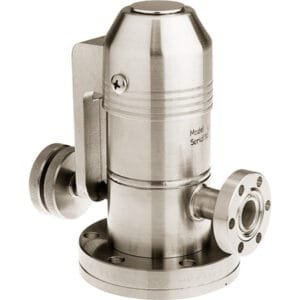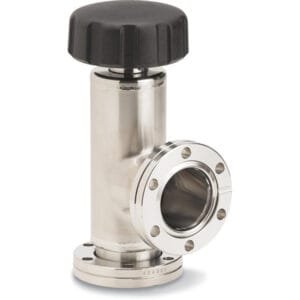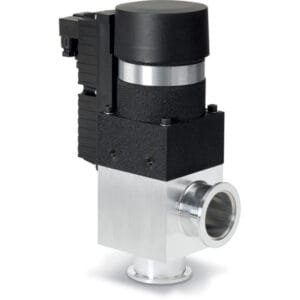Related Products
Related products
Manual SS Sapphire-Sealed Variable Leak Valve (CF Flanged)
Rated 0 out of 5Manual SS All-Metal Angle Valves (CF Flanged)
Rated 0 out of 5Aluminum Block Angle Valves (Electromagnetic)
Rated 0 out of 5
FAQ
What is the difference between tube fittings and pipe fittings?
Tube fittings are designed for tubes (measured by outside diameter and wall thickness) used in high-pressure and instrumentation applications, whereas pipe fittings are for pipes (identified by nominal pipe size) primarily used in fluid transport.
What are the most common types of valves used in piping systems?
Common valve types include ball valves, gate valves, check valves, butterfly valves, and globe valves. Each serves a specific function—from quick shutoff (ball/gate valves) to flow regulation (globe valves).
How do I determine the correct size for a valve or pipe fitting?
For tubing, measure the outside diameter; for pipes, refer to the nominal pipe size (using conversion charts if needed). Always match the valve or fitting size to your pipe’s dimensions and flow requirements.
What thread types are used in pipe fittings?
Frequently used thread types include NPT (National Pipe Tapered), BSP (British Standard Pipe), and UNC, along with slip-fit options that rely on compression or fusion rather than threads.
Are tube fittings interchangeable between different brands?
Interchangeability depends on manufacturer specifications and certification. Always verify compatibility via manufacturer guides or certified interchangeability charts.
What is a coupling, and what role does it play in pipe systems?
A coupling is a short, straight fitting used to join two pipes or tubes. It provides a secure, leak-tight connection and can sometimes serve to extend or repair piping runs.
What factors should be considered when selecting a valve?
Consider valve type, pressure and temperature ratings, material compatibility with your fluid, actuation method (manual or automatic), and maintenance requirements.
How do valves control fluid flow?
Valves regulate flow by opening, closing, or partially obstructing the pathway. Their mechanisms (such as the rotation of a ball or the linear movement of a gate) determine the speed and precision of flow control.
What is a flange and how does it function in piping?
A flange is a flat, circular component used to connect pipes, valves, or other equipment. Bolted together with gaskets, flanges provide a secure, leak-proof joint that facilitates both assembly and maintenance.
What is the difference between manual and actuated valves?
Manual valves require physical operation via handles or levers, whereas actuated valves use mechanisms—pneumatic, electric, or hydraulic—to open and close automatically or remotely.
What are common issues or failures encountered with valves and pipe fittings?
Issues include leaks caused by improper installation, over-tightening, degraded seals, material incompatibility, and fatigue from repeated cycling. Regular inspection and proper installation practices help mitigate these problems.
How should valves and pipe fittings be maintained?
Regular maintenance involves periodic inspections, cleaning or replacing worn seals, ensuring proper torque during installation, and adhering to manufacturer guidelines and local plumbing codes to preserve system integrity.





Reviews
There are no reviews yet.